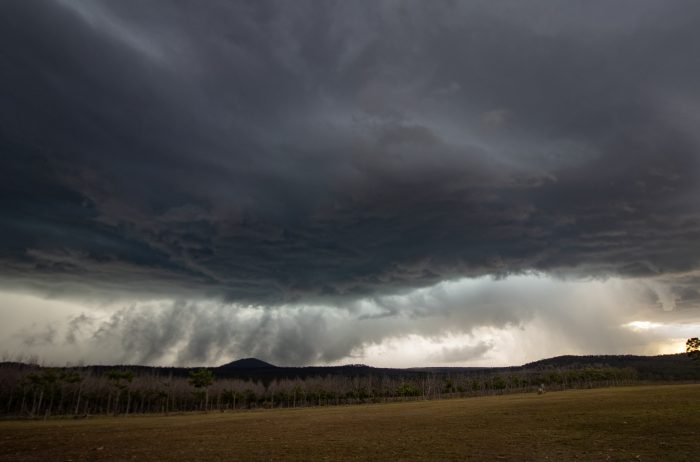- A severe thunderstorm brought hail and extreme wind gusts to south-east Queensland’s Lockyer Valley on 10th November 2023.
- The storm resulted in one fatality and destroyed crops and farm equipment with an estimated loss of $50 million.
On the afternoon of 10th November 2023, a severe thunderstorm passed through the Lockyer Valley west of Brisbane. A large volume of hail fell, and damaging winds were also observed. A high-pressure system over New Zealand and an associated ridge over the coast of south- east Queensland resulted in moisture from the ocean being transported into the region on 10th November. Strong surface heating and hot afternoon temperatures, coupled with the high moisture availability, created an atmospheric environment favourable for thunderstorms.
Thunderstorms formed to the north-west of the affected area at around 2 pm local time and moved south-east towards Brisbane and the surrounding regions. One relatively isolated storm developed into a supercell thunderstorm and tracked through the Lockyer Valley, bringing isolated large and giant hailstones and a large volume of smaller hail that accumulated on the ground in layers several cm deep. Wind gusts up to 87 km/h and localised flooding from heavy rainfall compounded the property damage.

The hailstorm resulted in destruction of agricultural property in the Lockyer Valley, with damage to crops and farming infrastructure estimated at $30 million and $20 million respectively. The 35-40 farmers impacted, along with the workers they employ, face loss of income for multiple months. These impacts are also compounded by continuing difficulties after the flooding events in 2022.
Sadly, there was one fatality from a falling tree during the storms. Due to the multiple storms that affected south-east Queensland, the SES received 19 calls for help and the south- east Queensland-based provider Energex reported loss of power to more than 2000 customers in the region.
As of 15th November, 18 farmers had reported damage, with three reporting catastrophic damage and 12 reporting major damage. This hail event demonstrates that hail volume as well as hailstone size influences the resulting damage.
Severe thunderstorms are expected to be affected by climate change, but thunderstorms are difficult to observe and model, and observed and projected changes for hail vary by region, partly owing to variations in atmospheric circulations. A broad expectation with warming is for fewer hailstorms overall, but larger hailstones when surface hail does occur, however a range of outcomes is possible. Scientists at the Centre undertake research to understand, observe and project climate-related changes to severe thunderstorms and their associated hazards and impacts.

Research contacts:
Annabel Bowden, annabel.bowden1@monash.edu, Dr Tim Raupach, t.raupach@unsw.edu.au
